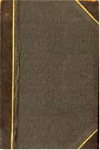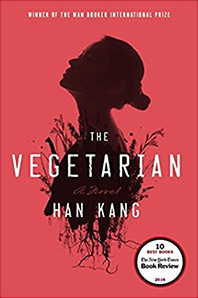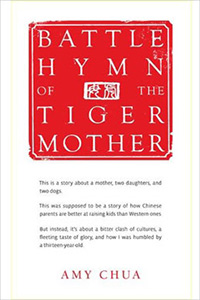|
|
 In No Particular Order
In No Particular Order 
|
| Classic |
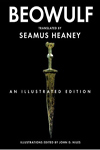 |
1. Beowulf, Author unknown (c. 800-1000 AD). This
Anglo-Saxon epic poem, the first major work in English, is the story
of young Beowulf’s battles with monsters and human forces. You’re
thinking that I just picked this because it was my masters thesis
subject. Fair enough. But it’s also a great story; forget the cheesy
movie versions. There are translations of varying quality; the
recent Seamus Heaney one has some academic detractors but I think it
is well done and easy to follow. |
| |
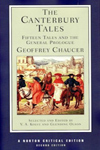 |
2. The Canterbury Tales, Geoffrey Chaucer (c. 1390).
Technically, it’s “unfinished” because there are possibly middle
parts missing, but the end is there, and there is a
beautiful sense of closure to the tales. Anyway, because it’s a
group of tales only connected by the theme of a group of tourists on
a pilgrimage package tour, you won’t notice. Some of the tales are
about knights and damsels, and it’s the real thing, written in an
age of knights and damsels. Other stories wouldn’t be out
of place in Penthouse Letters, and Chaucer’s not above a
fart joke. Find a good modernization and an uncensored version. It’s
worth it. |
| |
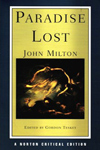 |
3. Paradise Lost, John Milton (1667). Just the title
makes many people groan, and it has a sort of “eat your peas” sound
to it. But if you aren’t intimidated by the poetic form and can slug
through the language, it’s a surprisingly good read. It’s the story
of Satan’s exile to hell, and Adam and Eve’s fall from paradise.
Satan comes off as a sexy, brooding, misunderstood rebel at the
beginning, and it’s only at the end when you see how he deserves
what he gets that you realize how good Milton is at manipulating
your emotions. |
| |
 |
4. The Odyssey, Homer (?) (8th century BC). This also
sounds like an intimidating book, but with a good translation it’s
actually easy to follow, and you’ll understand a lot more
references when you read other classic literature. After fighting
wars, Odysseus spends years unwillingly having adventures, feasting,
and whining until he returns to his loyal wife, Penelope, who is
being badgered by suitors and good-for-nothings. And then Odysseus
kicks butt. Fun. |
| |
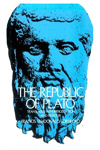 |
5. The Republic, Plato (c. 360 BC). This isn’t
technically fiction, yet it’s classic literature, one of the
foundational philosophical works of western civilization. Booorrrring?
Well, it’s not Grand Theft Auto, but it is fun to see Socrates and
his followers debate and construct the perfect imaginary society.
Realize at the end that Socrates’ ideal city might not be such a
good place to live... |
| |
 |
6. The Aeneid, Virgil (c. 20 BC). The idea behind the
Aeneid is to write a sort of sequel to the Homeric epics, but on the
side of the Trojans. The story’s premise is that the fleeing Trojans
travel to Italy to found Rome. Somehow I really like the story and
the adventures and battle scenes. Aeneas is the idealized republican
Roman: practical and responsible. Yes, that sounds a little dull,
but after the sneaking, pouting drama queens of Homer, Aeneas seems
much more likeable and accessible to a modern reader. |
| |
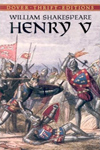 |
7. Henry V, William Shakespeare (c. 1599). Bring on the
war! Chaucer did fight in battle, and never glamorizes it in his
writings; Shakespeare probably didn’t ever serve, so perhaps he’s
less cynical about war. Here we have one of the most beautiful
brothers-in-arms speeches in English coming out of Henry’s mouth.
This is a “history” play, but it’s not dry; there are some court
details, but mostly it’s the Battle of Agincourt (1415). The Kenneth
Branagh movie is good too. If you read it unmodernized, try to find
one with good explanatory notes to help you through the 400-year old
English. Also good: Henry IV Part II. |
| |
 |
8. Macbeth, William Shakespeare (c. 1603). This is an
eerie, foreboding story, but it’s not as bleak as King Lear
(“never! never! never! never! never!”). Still, seeing Macbeth and
his wife melt down after killing King Duncan to take his throne is
darkly fascinating. There’s also witches and a porter who has to pee
badly to make things fun. A rock-solid story and characters. |
| |
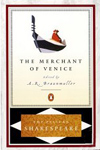 |
9. The Merchant of Venice, William Shakespeare (c.
1596). The play hasn’t aged well, as most people read it for the
wincing anti-Semitic depiction of the Jewish moneylender, Shylock,
whose loan for “a pound of flesh” backfires on him in court. The
recent magnificent Pacino film makes the poor moneylender even more
wronged. If you can get past this, the main characters, Antonio and
Bassanio, are actually more entertaining as they act like immature
playboys, and Portia has the funniest lines. I’d also call it a
really important text for understanding how the economic changes
from feudalism to investment capitalism in Europe was felt
culturally. |
| |
 |
10. The Tempest, William Shakespeare (c. 1611). This
Shakespearean fantasy was his last major work, and it really feels
different, somehow. The dialogue reads more modern (how many
characters tell you they “smell like horse piss”?) and Prospero has
more complex motives than the usual kill-em’-all revenge plots. Yes,
the love angle and suspense of the story are thin, and at times
Shakespeare seems to phone it in with a time-filling dance scene
(really). But the final scene, where Prospero-Shakespeare announces
that he’s had a good life but it’s time to hang up his “magic wand”
and retire, is wonderfully moving. |
| Victorian & Early Modern |
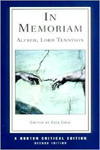 |
11. In Memoriam, Alfred Lord Tennyson (1849). If the
Antonio and Bassanio “friendship” doesn’t make high school students
snigger, this extended poem to mourn Tennyson’s friend, Arthur
Hallam, who died young, should do it. But the poem isn’t homoerotic
treacle; it moves from the emotions of lost friendship to wider
themes of religious and existential doubt. It’s not an easy read,
but it’s a beautiful book, and it was one of Queen Victoria’s
favorites. |
| |
 |
12. Frankenstein, Mary Shelley (1818). This is often
called one of the first horror novels, but it isn’t very scary and
doesn’t resemble the monster-movie versions much. I’d rather call Frankenstein
a proto-science fiction novel for the role that technology plays in
the story. I think some readers will be bored or put off by how
philosophical the book is and again, how little actual
blood or violence there is; but it’s a thoughtful story and the ship
setting that ‘anchors’ the story’s beginning and end is a wonderful
example of romantic naval narratives (without boring chapters about
whaling). |
| |
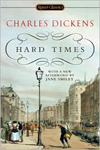 |
13. Hard Times, Charles Dickens (1854). Again, don’t be
put off by the title; it’s not a “hard time” reading the thing. The
heroes (?) Mr. Gradgrind and his CEO-friend Josiah Bounderby attempt
to raise Gradgrind’s children on a diet of facts and a joyless,
mechanical lifestyle until the whole works falls apart. The story is
a satire on utilitarianism, capitalism, and industrialization in the
Victorian period, and is at times dryly sarcastic and at other times
treacly and sentimental. Seeing Bounderby be exposed, and Mrs.
Sparsit calling him a ‘noodle,’ are far funner scenes than they
sound. |
| |
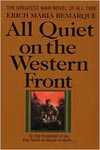 |
14. All Quiet on the Western Front, Erich Maria Remarque
(1929). Here’s another war novel, but it is one of the bleakest
novels on my list, told from the point of view of a foot soldier,
Paul, who watches his friends die and his country destroyed in the
trenches of World War I. This is not a happy novel, but it’s a
powerful story of persistence and loss. For something warmer but
weirder, also try E. E. Cummings’ The Enormous Room. |
| |
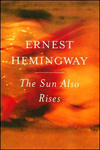 |
15. The Sun Also Rises, Ernest Hemingway (1926).
Hemingway is seen as a guy’s writer, with his short, blunt sentences
and drankin’ ‘n’ fightin’ characters. There’s that, but there’s also
some deep themes in the novel. The “Lost Generation” characters
wander aimlessly around postwar France and Spain as the protagonist,
Jake Barnes, is haunted by his impotence, both physical and
emotional. |
| |
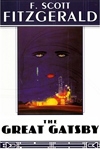 |
16. The Great Gatsby, F. Scott Fitzgerald (1925).
Fitzgerald and Hemingway were on-and-off drinking buddies, but
fortunately for Fitzgerald, Hemingway gave him editing advice.
Gatsby isn’t as sparse as Hemingway’s works, though; there’s a
richer beauty and poetry to the story of a rich tycoon who holds
parties for vapid 20’s swingers in order to find his lost lover,
building her up to an obsessive fantasy. Tender is the Night
is good too and a little more experimental, but not as poetically
focused as this gem on the shallowness of the Jazz age. |
| |
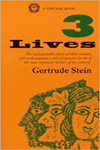 |
17. Three Lives, Gertrude Stein (1909). Well, if you
want experimental, this is over a century old, but it’s still
shockingly strange in its super-realistic style of narration. Stein
repeats herself, contradicts herself, leaves out details, stretches
others, and generally refuses to tell any of the three stories
straight. The style forces the reader to think about plot and
characterization in totally different ways. A 1909 acid trip. |
| |
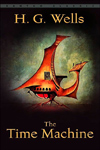 |
18. The Time Machine, H.G. Wells (1895). This is a short
read and something different from War of the Worlds. The inventor of
a time machine travels 800,000 years into the future to find
humankind divided into two races, one utopian and child-like, the
other underground and bestial. It’s a thinking novella, but it has a
dose of cool when you start asking, “What if?” Science fiction
changes a lot between here and Neuromancer! |
| |
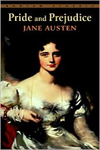 |
19. Pride and Prejudice, Jane Austen (1813). Jane Austen
is so popular with many female readers that male readers feel about
as welcome as at a showing of “Vagina Monologues.” That’s too bad,
because it’s actually more than sappy chick-lit. Something that
doesn’t come across in the movies and in book clubs filled with
unmarried women with cats is what a smartass Austen was. Some of the
snide remarks and cutting sarcasm make her books dryly funny and
well worth reading. |
| |
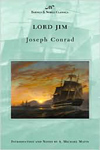 |
20. Lord Jim, Joseph Conrad (1900). Everyone reads the
shorter Heart of Darkness, and that’s a shame, because Lord
Jim is more sophisticated and less cheesy. It’s a sailor’s
story, also narrated by Marlowe, about a first mate who abandons his
ship and then tries to live down his shame with heroic acts. Not
many people can paint an exotic Indonesian jungle setting like
Conrad can and describe the emotional workings of his characters
with such vivid detail. In a word: adventure and romance, again,
without the endless whaling details of Moby Dick. |
| |
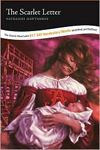 |
21. The Scarlet Letter, Nathaniel Hawthorne (1850). This
is not an easy read, let alone because of the cinematic dungheap of
the film version with Demi Moore. Hester Prynne is banished from her
Puritan New England community after an act of adultery gives her a
daughter. The tale of sin, redemption, and forgiveness isn’t in
style anymore, but it’s a beautiful story with a master’s touch of
imagery and description. |
| |
 |
22. The Hound of the Baskervilles, Arthur Conan Doyle
(1902). We need a mystery in the list, so why not a Victorian
English one with Sherlock Holmes, Watson, Dr. Mortimer, disbelieving
Scotland Yard, an eerie castle with a curse, aristocrats with
monocles, and dark, somber weather? Have we left anything out? |
| |
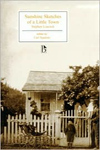 |
23. Sunshine Sketches of a Little Town, Stephen Leacock
(1912). This is Austen without the bite, a gently sarcastic series
of stories about a small Canadian town named Mariposa, with assorted
village kooks and characters. It’s an affectionate laugh, especially
when the town steamboat sinks in six feet of water and the
townspeople treat the event like a Titanic-sized disaster. You’d be
surprised how many Canadian comics and authors (and international
ones) consider this a kind of ur-source of Canadian
comedy. |
| |
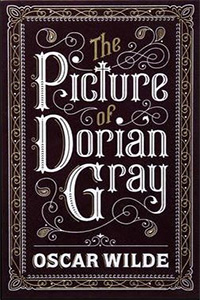 |
24. The Picture of Dorian Gray, Oscar Wilde (1890). Not
everyone likes Wilde’s fashionable oversophistication, and the joke
of aristocratic women saying cynical things in stylish epigrams can
get tired. But it’s a cracking good horror story / morality tale
about Dorian wishing his portrait would age instead of him, which is
what happens. Despite the social media memes quoting Wilde
as a sensual psychopath, these are not Wilde’s opinions,
but Lord Harry’s, Dorian’s friend who guides him into increasingly
self-destructive sins of pleasure. Avoid the cheesy movie versions. |
| |
 |
25. Pygmalion, George Bernard Shaw (1912). Speaking of
egos– no surprise that Shaw and Wilde didn’t like each other– Shaw’s
misanthropy and his dalliance with fascism late in life hasn’t aged
well. It’s a weird play, for unlike the My Fair Lady
adaptation, it is not really a romance at all, but rather a strange
joke on the class system as Eliza fakes her way into the aristocracy
and finally puts down Higgins as a cold and spiteful jerk. Are we
supposed to cheer for Eliza, or really for Higgins, who seems rather
like Shaw? I don’t know. |
| |
 |
26. Dubliners, James Joyce (1914). This is not a novel
but a series of short stories. Joyce’s later works get a little
experimental and difficult, but this early work is an intimate look
at the lives of citizens in, well, Dublin. Some stories are
heartbreaking and others seem depressing for depression’s sake, but
the last and longest story, “The Dead,” gets my vote as the best
short story in English letters. It’s a soaring, epic, achingly
beautiful painting of life, identity, and death. It’s one of my
favorite texts on this list. |
| |
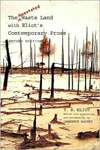 |
27. The Waste Land, T.S. Eliot (1922). Lots of bite
here. This is an extremely difficult poem to understand, with its
oblique classical references, poetic devices, and multiple layers of
symbolism. Basically, the “waste land” is the discredited rubble of
the cultural capital of western civilization after World War I.
Whoa. Find an edition with other poems such as “Prufrock” in them
and lots of explanatory notes. But just reading this poem will teach
you a great deal about the twentieth century. |
Modern &
Post-Modern |
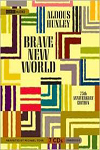 |
28. Brave New World, Aldous Huxley (1932). 1984
gets the attention for its violence and mental and physical
brutality, but Brave New World is equally satirical of its
time period and paints perhaps a more insidious future. Around the
year 2540, everyone is essentially a teenager. The rulers use
pleasure to maintain control, as the populace lives distracted by
material and sexual gratification, with no politics, religion, high
art, or philosophy. Sounds a little too much like California in
2024? Huxley, inspired by his own trip to California in the ‘30s,
would agree. |
| |
 |
29. The Great Divorce, C.S. Lewis (1945). Lewis is
mostly known for his Narnia stories, and that’s unfortunate; his
other novels and non-fiction are also excellent. Great Divorce
takes place on the outskirts of heaven, where already saved people
come to convince their newly-arrived loved ones and associates to
stay and live in paradise. The interesting theological angle is the
many reasons, usually rooted in pride and spite, why most newcomers
refuse heaven and choose to leave. Screwtape Letters is
another morbidly interesting experiment, told from the devils’ point
of view. |
| |
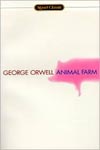 |
30. Animal Farm, George Orwell (1945). Orwell’s grimly
humorous story of how animals stage a revolution and take over a
farm, only to have the ruling pigs slowly corrupt the system into
dictatorship is, of course, an obvious allegory of 20th-century
Soviet communism. It still ages well as a look into how power
corrupts and how propaganda can twist and enervate values and
language. |
| |
 |
31. Pedro Paramo, Juan Rulfo (1955). I’ll sound like a
snob for recommending a fairly obscure Mexican author, but he’s well
known in Mexico and it’s a fantastic book. In a novel-length
stream-of-consciousness float, Juan Preciado enters a town looking
for his father he has never met, Pedro Paramo. My belief is that
everyone in the town including Juan is dead and that the town is
actually purgatory due to the ethereal, unreal, impossible natures
of the characters. You decide. An eerie but very cool read. |
| |
 |
32. The Hitchhiker’s Guide to the Galaxy, Douglas Adams
(1979). This is a rather geeky book, but it’s silly fun in a
Monty-Python way. Englishman Arthur Dent is rescued from the Earth
as it’s destroyed to make an interstellar highway, and meets alien
bureacrats, a depressed robot, and super-intelligent mice who are
building a replacement earth. There’s a series of Galaxy
books, and here I am referring to the first one. |
| |
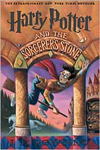 |
33. Harry Potter and the Sorcerer’s Stone, J.K. Rowling
(1997). “It’s popular!” “It’s juvenile!” A lot of critics don’t,
harrumph, read Harry Potter; it sells too well. But sometimes the
public is right; they’re great books and inventive stories, and
they’ll still be read centuries from now. I’ve picked this one
because I haven’t read the others, but I will. It’s also titled the
“Philosopher’s Stone” in England, where presumably English audiences
can understand them big words. |
| |
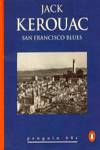 |
34. San Francisco Blues, Jack Kerouac (1954). I’m not
saying Kerouac is my favorite poet; it’s just a cool read and a look
into a different time. I also really like typographical modernist
poets such as E.E. Cummings (be careful with that search engine!). |
| |
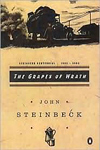 |
35. The Grapes of Wrath, John Steinbeck (1939). Were it
not for the occasional humorous scenes, such as Granpa Joad
scratching himself and talking about squishing grapes on his face,
this would be the bleakest novel on my list. The story of the Joad
family trying to escape farm failure in Oklahoma, and being crushed
by depression-era capitalist forces and flat-out starvation, is not
a happy read but it’s moving for its social statement and religious
symbolism. |
| |
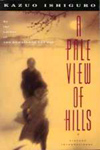 |
36. A Pale View of Hills, Kazuo Ishiguro (1982). Set in
postwar Nagasaki and in England, this is a rather “feminine” novel
with its mostly female cast and shifting, unreliable narration, but
it’s a powerful psychological portrayal of the narrator, Etsuko, who
tries to both understand and suppress her past memories of the
atomic bombardment and her resulting family and personal problems.
It’s much better than it sounds. |
| |
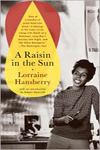 |
37. A Raisin in the Sun, Lorraine Hansberry (1959). I
must admit, what can I know about a play about a black family in
50’s Chicago? I guess I like this book because the characters are
great; the Younger family deals with prejudice, scamming friends,
and a daughter looking for “African identity.” My runner-up here is
Tennessee Williams’ plays, but Hansberry’s people are just more
interesting. |
| |
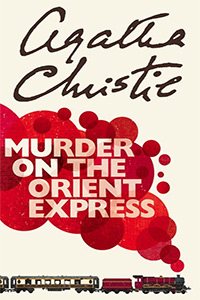 |
38. Murder on the Orient Express, Agatha Christie
(1934). It’s maybe unfair, in retrospect, that we now have parodies
and knock-off stories about crime on trains with mustachiod French
detectives and overwrought scenarios– because Christie invented
these tropes and they weren’t cliches yet when she did. It’s all
here: Inspector Poirot, the angry fat man, the Victorian nursemaid,
the woman in the kimono, and, gentlemen, one person in this
compartment killed Mr. Osbourne at exactly 1:37 AM as we passed
Linz, but the question is who? Christie’s ethnic
stereotypes age less well, but overall fun stuff. |
| |
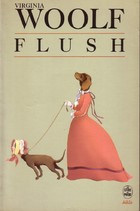 |
39. Flush, Virginia Woolf (1933). No, not about toilets,
it’s a short novella about a dog, Elizabeth Barrett Browning’s to be
precise. It’s a clever concept as Woolf uses actual letters and
details about Browning’s life to construct a story from the dog’s
perspective. In the past I’ve had limited tolerance for Woolf’s
modernist obscurism, but this is well done, creating a non-preachy
argument against the class system as Flush observes that unlike the
human obsession with social rank, dogs don’t care about such things. |
| |
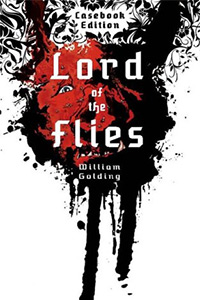 |
40. Lord of the Flies, William Golding (1954). Yes,
teenagers are more jaded now, but when I was in grade eleven this
novel scared the pants off me. It’s a chilling story of how
boys marooned on a desert island take a lovely, fruit-filled
paradise and descend into tribal warfare as democracy is destroyed
by a violent dictator. While there’s of course a symbolic level
here, Golding doesn’t let us forget about the actual dirt, fire, and
pig blood, and his naturality of description makes the story even
more chilling. |
| |
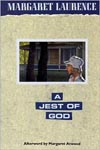 |
41. A Jest of God, Margaret Laurence (1966). I suffered
through her interminable The Stone Angel (1964) in high
school. The latter has the same Laurence standards: emotionally
suppressed female protagonist, nagging Scottish mother, drunk,
passive men, and emotionally deadened prairie villages, but somehow
Laurence puts more sophistication and wit into this one. Munro’s Lives
of Girls and Women (1971) isn’t bad either. Don’t confuse her
with Canadian feminist Margaret Atwood. |
| |
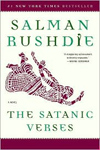 |
42. The Satanic Verses, Salman Rushdie (1988). Rushdie
doesn’t seem very likeable in interviews and essays, but give him a
break for the danger this book has caused him. This is actually the
most difficult novel on my list, perhaps as hard to understand as
T.S. Eliot. The plot is about two Indian men who “die” in an
airplane explosion, but there are so many levels of interpretation
that you’re not sure what was real or allegorical at the end, and
the blasphemous sections form only a part of the novel’s complex
themes. Don’t rush this one. |
| |
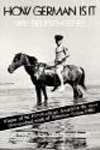 |
43. How German Is It, Walter Abish (1980). Not a
well-known novel, but it’s great. Like a Pale View of Hills, it’s
about a community self-repressing their war past (in this case
German), but here the tone is much sharper and funnier as the main
character tries to understand his father, a resistance fighter
against Hitler, and runs up against his architect brother and a
community which does everything to not talk about it. You
just know it’s all going to blow up at some point. |
| |
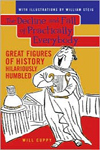 |
44. The Decline and Fall of Practically Everybody, Will
Cuppy (1950). This isn’t a novel, but a humorous collection of
semi-fictional and semi-historical chapters making fun of assorted
historical celebrities. Cuppy was himself a shy New York hermit, and
his deadpan, stoic wit makes this a goofy book. |
| |
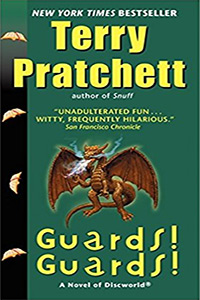 |
45. Guards! Guards!, Terry Pratchett (1989). Pratchett
has a rabid following, and I was always intimidated by the
70,000-plus books in his Discworld series. On the advice of a friend
I tried Guards! Guards!, and found that his books are
digestible as standalones, and this is a good one, even if it has
the feel of a pop fantasy, need-something-for-the-flight read. At
times Pratchett really is clever and his dark humor and wordplay
sparkle, whether he has librarian apes, a thief’s union, or an evil
dragon who begins to wonder if humanity is morally worse. |
| |
 |
46. A Tourist’s Guide to Glengarry, Ian McGillis (2002).
Canadian literature can be bleak, but this is a warmly funny book in
a more Stephen Leacock manner about an Edmonton boy who has a school
assignment to write a tourist brochure about his own community.
Written in the boy’s voice, the book’s “day in the life” structure
is filled with humorous situations that he doesn’t always
understand. What can I say? I like my hometown references. A nice
chaser to my
own
book, maybe, which I’m reluctant to put on this list. |
| |
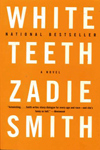 |
47. White Teeth, Zadie Smith (2000). I have a lot of
immigrant writers from England on my list, but this is one of my
favorite novels in any category. Englishman Archie and Iraqi Samad
are war buddies who live in the past while their familes are torn
between their roots and the swirling present of multicultural
London. There’s a 19th-century war hero, Muslim extremists,
Carribbean barflies, scrapping wives, anarchists, lesbians, and a
bio-engineered mouse. If you can keep everyone straight, it’s a
funny and powerful read on 21st-century multiculturalism. |
| |
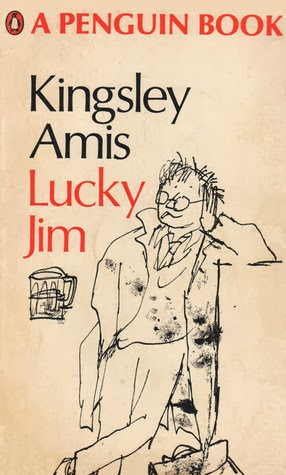 |
48. Lucky Jim, Kingsley Amis (1954). I have quite a few
fictional books of humor here, but I can’t resist Lucky Jim,
which is a really funny spoof on upper-class pretentiousness in the
university culture of mid-50’s England. Jim is a loveable screwup
who would much rather drink than teach, and he repeatedly makes a
mess in the lives of his absent-minded department head, Prof. Welch,
and his arrogant family. One of my favorite books, and possibly the
best hangover scene in literature. |
| |
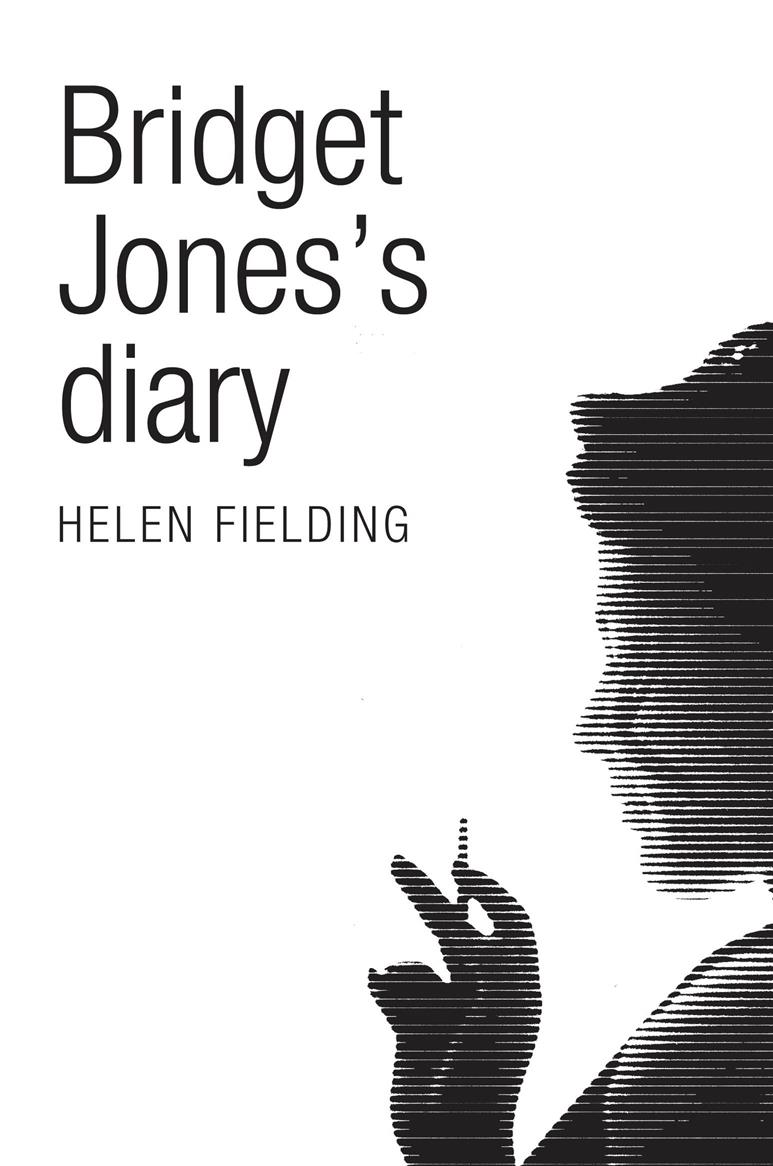 |
49. Bridget Jones’s Diary, Helen Fielding (1996). Like Pride
& Prejudice, the title “chick-lit” scares away men from
this book, sadly; and as with Austen, the sappy movie doesn’t get
across how funny the novel is. Arranged in (of course) diary entry
form, the book relates Bridget’s boozy, lazy, neurotic personality
as she obsesses over boyfriends, writes things she immediately
contradicts (or in fractured English when she’s drunk), and makes
great insulting descriptions or exaggerations. There’s also some
interesting postmodernism in a book where the narrator discusses P&P,
never realizing that the novel she is in has a similar plot
narrative. |
| |
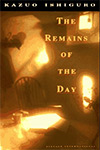 |
50. The Remains of the Day, Kazuo Ishiguro (1989). This
book is a little like Bridget Jones in that the narrator
is inconsistent; though here it’s more psychologically complex as
time passes and the main character, Stevens, begins to reinterpret
and understand his memories. This can be a difficult read because
there isn’t a strong plot, but the story is increasingly sad as the
reader sees how Stevens cognitively fights against realizing he has
lost out on love in service of his master, who turns out to be
increasingly less honorable as the book goes on. |
| |
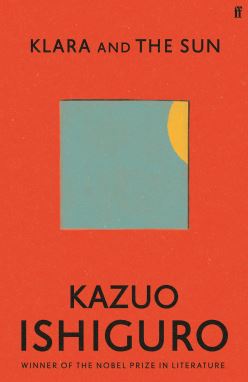 |
51. Klara and the Sun, Kazuo Ishiguro (2021). You can
tell I like Ishiguro by now. This isn’t his best, but it’s an
enjoyable read that hits you in the feels. The story makes use of a
technique called defamiliarization
(check out Craig Raine’s poem A
Martian Sends a Postcard Home (1979); Klara is a companion AI
robot in the near future who is charged to take care of a sick girl,
and she/it believes that the sun is alive and generously gives her
solar power. The twist is that most of the humans in the novel are,
well, self-centered assholes, and it’s the AI robot that has the
most, well, humanity.
|
| |
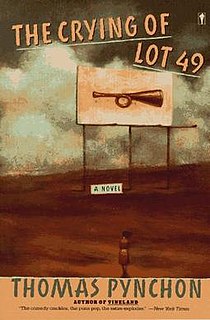 |
52. The Crying of Lot 49, Thomas Pynchon (1966). Ten
points to Gryffyndor if you can tell me what this book means. A
postmodern joke about nothing, the big statement about America, a
complex allegory as elusive as the famously unknown author? Oedipa
Maas travels around California meeting other people with
ridiculously Freudian names, getting tangled up in a conspiracy
theory about a suppressed alternative postal system. And, um, rock
bands, and LSD, and obscure 19th-century European wars. No, really,
that’s what it I think it’s about. As ABBA would say, take a chance
on me. Some people love the book, and I always find it humorously
confusing.
|
| |
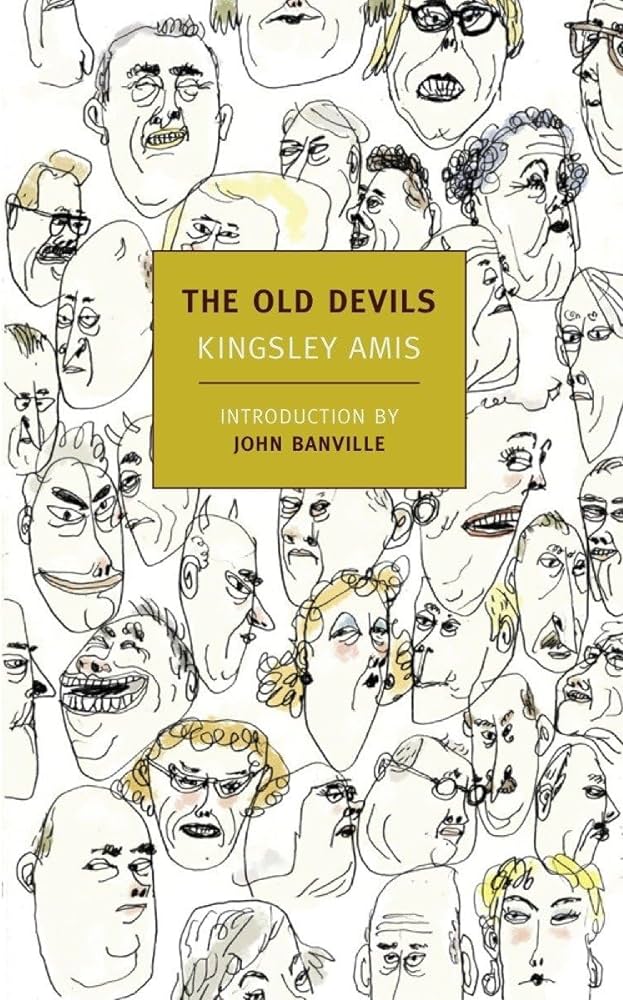 |
53. The Old Devils, Kingsley Amis (1986). For some
reason I like Amis, despite his terrible reputation as a
misanthropic drunk. He's a bit like your crusty uncle who says
funny, outrageous things at weddings. But like Lucky Jim, Devils
is hilarious and possibly the most sarcastic novel I've ever read.
An elderly circle of retirees in Wales which spends most of its time
drinking and sniping at each other is upended by the return of a
writer friend who's even nastier than they are. But then strangely,
his wife does something very un-Amisian which changes the whole
story by being a genuinely nice person. |
| |
 |
54. The Curious Incident of the Dog in the Night-Time,
Mark Haddon (2001). I generally don’t like limited child narrators
(re Catcher in the Rye
below), as a narrator that oversimplifies everything can be
frustrating. Here the narrator is a boy with some form of autism,
and he gives us different
information: exact data on
what people are wearing, or how many cows there are on the field and
their breeds; but not people’s obvious emotions, which Christopher
can’t perceive. The plot isn’t profound, but seeing the world
through an alternative but very innocent set of eyes is moving at
times.
|
| |
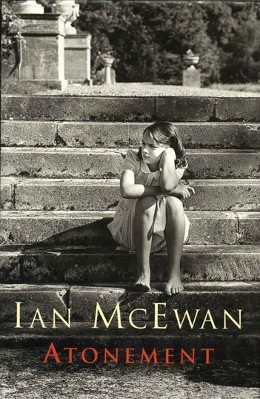 |
55. Atonement, Ian McEwan (2001). I didn’t like his Amsterdam, and found it smugly
and unnecessarily dark and cynical. But good lord, this is a sad yet
authentically gripping story about how a little girl’s flippant
accusation ruins the lives of two lovers. Then World War II begins,
because heaven knows the novel needed more human misery. Sometimes a
bit over-described, but the novel is redeemed by its twists and the
powerful emotion of guilt that the adult girl experiences over one
long-ago day gone very badly. |
|

|
56. Do Androids Dream of Electric Sheep?, Philip K. Dick
(1968). For much of the twentieth century, sci-fi was pretty
childish and poor-quality. The new generation of writers in the 60s
helped make it respectable, and Androids is both an
enjoyable and thinky book, asking questions about the value of
humans/androids/animals and what happens when the lines are blurred
between them. And this is 1968! Bladerunner is an adaptation
of the book, but while it's a good movie, it's quite different.
|
|

|
57. Still Life With Woodpecker, Tom Robbins (1980).
Americans can be crazy, but at their best they have an outrageous,
Bugs-Bunny-esque candor and optimism I admire. This is an extremely
silly book about a deposed princess who falls in love with an
arsonist, symbolized by a pack of cigarettes and pyramids. Add in
the narrator continually complaining about his typewriter. None of
this makes much sense, but imagine a warmer, happier version of The
Crying of Lot 49. Sign me up for all the postmodern trickery
and authors-arguing-with-characters, when it's done with heart.
|
|
History
(Nonfiction)
|
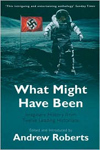 |
58. What Might Have Been, edited by Andrew Roberts
(2005). “Counterfactual history” sounds pretty dry, but it’s really
one of the coolest books I’ve ever read. Historians look at actual
events and then answer the questions you ask in dorm rooms late at
night: what if Lenin had been shot? What if England had lost to the
Spanish Armada? What if Japan had not bombed Pearl Harbor? You
actually learn a lot about real history by reading imaginary ones. |
| |
 |
59. The Black Death and the Transformation of the West,
David Herlihy (1997). Well, granted, it’s not a party book. But
there are not many good books which explain the black death, one of
the most important events to ever happen in Europe. Herlihy argues
that the Black Death actually caused many positive consequences,
such as the labor shortages which led to the industrial revolution.
Again, it’s better than it sounds. |
| |
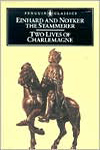 |
60. Two Lives of Charlemagne, Einhard and Notker (c. 800
AD). These are translated first-hand accounts, not interpretation or
fiction. There’s not much war here; rather these are intimate
portraits of the court life of Charlemagne and ninth-century Europe.
You learn a great deal about the thoughts and values of the time,
straight from the mouths of Charlemagne’s chroniclers. |
| |
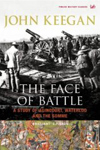 |
61. The Face of Battle, John Keegan (1976). Okay,
admittedly the German in me loves a battle story, but I’m also
trying to get more guys into reading. Keegan gives us highly
detailed analyses and blow-by-blow accounts of the battles of
Agincourt (1415), Waterloo, and the Somme. Weapons, tactics, and
battle formations are described; all the good stuff. At the end you
almost feel that your clothes are muddy. |
| |
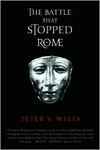 |
62. The Battle That Stopped Rome, Peter Wells (2004).
Okay, my last war book, promise. Wells describes one of the most
crushing military disasters in history, the little known battle of
Teutoburg forest in 9 AD. Sneaky Germans hide in the forest and trap
the overconfident, arrogant Roman general Varius, cutting three
Roman legions to flinders. The defeat explains why Germans drink
beer and Italians drink wine. |
| |
 |
63. Many Tender Ties, Sylvia Van Kirk (1980). My
undergrad minor was in Canadian history. By conventional standards,
not much happened; but books like this describe in rich detail how
daily life was in a fur trade outpost and how the native women who
visited the posts started to look better and better to male European
traders out in the woods by themselves... |
| Humanities (Nonfiction) |
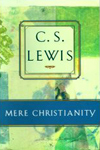 |
64. Mere Christianity, C.S. Lewis (1943). I haven’t put
the Bible on my list as I somehow found it disrespectful to call it
“a good read.” If you don’t have a Bible, you should at least be
open to a book like this. Lewis is much more than Narnia; as a
theologian, he’s excellent at explaining and arguing for Christian
belief in a way that’s interesting and easy to follow. |
| |
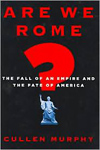 |
65. Are We Rome?, Cullen Murphy (2007). A very recent
book, this is a discussion of current events in the USA, asking
whether we’re on our way out in Roman style. Murphy doesn’t exactly
think so, but the comparisons between 21st-century America and
4th-century Rome can be chilling: military hubris; overdependence on
mercenary soldiers; concentration of power and wealth into elites. |
| |
 |
66. Building Suburbia, Dolores Hayden (2004). For
someone who flunked a regional planning course miserably,
architecture books interest me. Hayden traces the history of suburbs
and how special interests and politicians steered their development.
Later on she explains how better planning might have made our cities
far more livable and people-friendly. A challenging read and a good
argument for changing things. |
| |
 |
67. Dark Age Ahead, Jane Jacobs (2003). Maybe because I
feel so disenfranchised from baby-boomer North America, I secretly want
our society to fail. This isn’t a cheery read, but it’s interesting,
and Jacobs certainly foresees some sort of decline, caused largely
by suburban, infrastructural, economic, and social decay. Jacobs has
numerous books and this wasn’t reviewed well, but I’ll read more of
her to compare them when I can. |
| |
 |
68. Guns, Germs, and Steel, Jared Diamond (1997). To be
honest, I haven’t finished the book, but I’m working on it. It’s a big
book, and extremely dense with detail. Diamond answers some of the
huge questions: why do some civilizations rise and others fall? His
explanation deals with technology (guns) and sometimes just blind
chance (germs) as some societies happen to be at the right place and
time. |
| |
 |
69. Cosmopolitanism, Kwame Anthony Appiah (2007). This
is a very “thinky” book, dealing with the idea of cultural and
personal identity in a multicultural world. Appiah talks about a
variety of issues, such as how we can judge (or not judge) different
value systems, how to get along with people who don’t want to get
along, and even specifics such as which country’s museums own
cultural relics. |
| |
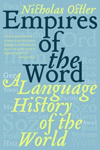 |
70. Empires of the Word, Nicholas Ostler (2006). This
won’t be to everyone’s taste. You might find it really cool to learn
how ancient languages such as Sumerian influenced Akkadian and other
Arabic languages. You might think it’s neat to know how Indian
writing systems developed and how historical forces shaped European
dialects. Or maybe you would rather watch paint dry. To each their
own. |
| |
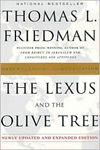 |
71. The Lexus and the Olive Tree, Thomas Friedman
(1999). I’ve lost respect for Friedman in recent years as he has a
tendency to idealize globalization and seems to believe everything
is solvable by his ever-present whiz-kid start-ups in Bangalore. In
fairness, he doesn’t necessarily think globalization is always
beneficial as he tries to trace how it has changed how economies,
polities, and cultures work with or battle each other. But Friedman
remains fairly optimistic that we’ll work better and happier. We’ll
see. It’s an interesting attempt to put these concepts into a bigger
picture and his best work. |
| |
 |
72. Bowling Alone, Robert Putnam (2000). This tome can
be an acquired taste with its charts and statistics, but Putnam
marshalls an impressive dataset to make an emotional point, that
America’s sense of social community is, for now at least, dying.
Putnam lists and analyzes all the ways in which levels of social
participation in religious, sports, and all forms of community
organizations have collapsed in the last half-century. Another
slightly grim, if objective, read. |
| |
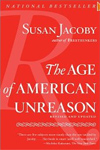 |
73. The Age of American Unreason, Susan Jacoby (2008).
Once again, I don’t want to scare you away from what looks like a
snobby book. Jacoby can admittedly be snarky and elitist at times,
but her evidence that the postmodern USA is becoming increasingly
hostile to reading and intellectualism is thorough, convincing, and
frightening. Read it and then watch Idiocracy
as a chaser. |
| |
 |
74. The World Without Us, Alan Weisman (2007). This is a
book that you would expect to be a preachy, Cassandra-like text on
environmental catastrophe, but it is actually a very interesting and
friendly read based on the idea “what would happen if the humans all
disappeared?” Cities would be very quickly be reclaimed by nature.
Bronze and glass would last, but not paintings or houses. Putnam
goes all over the world, to Cyprus, Poland, and the Korean DMZ, to
see what happens in those places where the humans are
gone. Freakin’ cool. |
| |
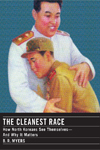 |
75. The Cleanest Race, B.R. Myers (2010). There’s a
recent spate of very grim books about the murderous crime family
which poses as the legitimate government of North Korea, mostly
dealing with repression and starvation. This one deals with the
ideology behind the regime. Surprisingly, North Korea turns out to
have very little that’s Confucian or Communist about it, relying
more on an extraordinarily racist ideology of Koreans as simple,
innocent, and childlike, needing protection by their Dear (Mother?)
from the subhuman Yankee imperialists. The best explanation of this
deliberately opaque country I’ve ever read. |
| |
 |
76. What the Dog Saw, Malcolm Gladwell (2009). When you
see the tables of contents, Gladwell’s books look like a Seinfeld
episode—they seem to be about nothing. There are chapters on
mustard, dog training, tomato slicers, the homeless, and hair dye.
What in the world? But the books are addictive as Gladwell analyzes
why things work the way they do, why people make the decisions they
do or buy the products they do. In the end mustard becomes very
interesting. Also check out Blink (2005), a non-thinky
book where Gladwell analyzes how instincts can be more accurate than
reasoning. |
| |
 |
77. Back to Our Future: How the 80’s Explains The World We
Live in Now, David Sirota (2007). The book does poke fun and
have some sentimental nostalgia for the, uh, greatest decade of the
80s, but much of Sirota’s argument blames President Reagan for
deregulating media so that our present culture and politics is awash
with references to its values, which can be summed as: 1. Government
is evil; 2. The 50’s were glorious; 3. The 60’s hippies ruined
everything. I don’t always see it, but it’s an analysis of the media
culture I grew up with and which is very seldom discussed. |
| |
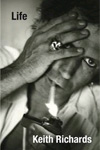 |
78. Life, Keith Richards (2011). An odd choice, but
Richards is a more thoughtful and interesting person than the
comatose junkie you would expect (he actually stopped abusing drugs
decades ago). Richards not only has the wild Stones stories and
interesting trivia you would expect but has a warm, self-deprecating
charm as well (the Richards-Jagger rivalry does get catty, but he
pulls it off somehow). To me this is the best of recent
autobiographical works: Eric Clapton is so nice that he’s, well,
dull; Richards sounds more like your cool uncle. There are some
naughty scenes, but not everything on my list has to be morally
uplifting. |
| |
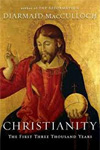 |
79. Christianity: The First 3000 Years, Diarmaid
MacCulloch (2011). Good grief, this is a massive work; I read for
most of a summer and I was still in the Victorian era. MacCulloch
tends toward an agnostic viewpoint, which perhaps doesn’t satisfy
anyone, but to me he’s trustworthy at disentangling a massively long
chain of events in the eastern and western Roman empires from before
Christ’s birth down to the present. There are an awful lot of
heresies to keep track of but MacCulloch walks you through it, and I
admire him for not going into the usual cheap shots against the
medieval era; he treats the people and their time periods with
respect. |
| |
 |
80. The Geography of Thought, Richard Nisbett (2003). I
wish I had this book when I first came to Korea. Nisbett isn’t
universally accepted and his separation of Greco-Europeans from
Chinese-Asians seems too binary (he concedes that he overgeneralizes
for clarity). Yet the book is fascinating in its argument that
lightly-populated and transient Greeks gave rise to thought patterns
relying on logic, analysis, and classification of discrete ideas,
whereas the static and communal nature of east Asian culture made
its thinking, culture, and even religion and language focused on
practical application and understanding things in context. Nisbett
is careful to not judge, but rather gently argues that we might
think and teach better by incorporating both mindsets. |
| |
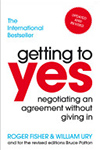 |
81. Getting to Yes, Roger Fisher & William Ury
(1981). I would make a poor lawyer, but I do think argumentation is
interesting. Here’s a business book about negotiation, but it is not
about what you expect: a tough-guy guide to being assertive filled
with advice and cliches on hammering people. Rather, it’s a more
psychological approach to applying human nature to resolving
conflicts. Ury discusses the limitations to hard take-it-or-leave-it
bargaining, explaining that the most effective method for solving
conflicts is, where possible, to advocate win-win solutions that
cause both parties to respect the outcome. That’s not easy. Yes, he
does mention Israel and Palestine. |
| |
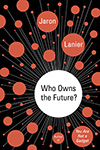 |
82. Who Owns the Future, Jarod Lanier (2013). This is
freakin’ cool. Lanier is a Silicon-Valley era comp scientist who
originated the term virtual reality, but much of the book
is in fact an endictment of the present internet, which he believes
is strangling capitalism and the middle class by making information
and media appear to be free at the cost of lost jobs and privacy.
His more difficult thesis is that in the long term all
data on the internet should be paid for, including contributions by
users, in order to construct a monetized online economy. I’m unsure
how people can be paid for posting pictures of babies and cats, but
it’s an interesting alternative to the present chaos of cyberspace. |
| |
 |
83. Postcapitalism, Paul Mason (2017). Wonderful book,
but a difficult read as Mason draws on Marxist theory (easy now,
he’s not advocating his solutions, only Marx’s diagnoses) and what
he sees as long waves of expansion and contraction in capitalist
economies. Basically, he argues that the Internet, robot
mechanization, and environmental ruin are so disruptive that this
will be the last wave of capitalism. He becomes less clear when he
tries to lay out a possible future variation on it. Not that
predicting economic systems is an easy project for anyone. |
| |
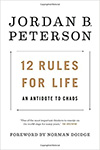 |
84. 12 Rules For Life, Jordan Peterson (2018). Despite
being the bete noire (well, look it up) of progressives
for his controversial views rejecting gender and identity politics,
the book is not about that, but rather is about the... 12 rules. The
rules themselves can be boiled down to “grow the hell up and take
care of little things to make your life better” and are actually
quite conservative. The why and how are more
interesting as Peterson finds evolutionary and biological reasons
for many of our cultural and ethical motivations. I don’t always
agree. But Peterson cares about tradition, scripture, and the
individual, and it’s one of the deepest books I’ve read in years. Full review here. |
| |
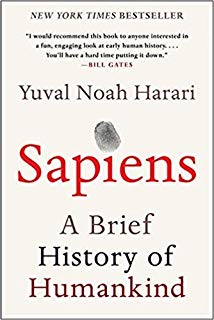 |
85. Sapiens, Yuval Noah Harari (2014). I have mixed
feelings about the new Chicago-ish school of applying statistical or
scientific solutions to human problems, as Steven Pinker’s Better
Angels also does. The books can feel cold, and I don’t like
their sniffy scientism; in Homo Deus Harari simply
decides, like Dr. Evil cutting off his son, that because science
can’t measure souls, then souls don’t exist, the end. The two
authors sometimes have a poor understanding of the medieval period
they hate. But among the three, Sapiens is a really
interesting read in how it gives a thorough sociological history of
man, asking (among other difficult questions) whether the jump from
hunting-gathering to agriculture was actually a good idea. |
| |
 |
86. The Weirdest People in the World, Joseph Henrich
(2020). This is the most important book I've read in years,
and it's really helped me "unlock" Korea and other non-western
cultures. Why did Western culture come to dominate the world in the
20th century? Because we're better people? Of course not-- but
Henrich argues that the recipe of abstract rule of law and non-kin
marriage has provided a template for success over kin-based
cultures. The book can get wooly and over-statistic-ey, but it's a
fascinating and provocative discussion-- and yes, Henrich discusses
the downsides of western "WEIRD"-ness as well: weakened family nets
and loneliness. |

